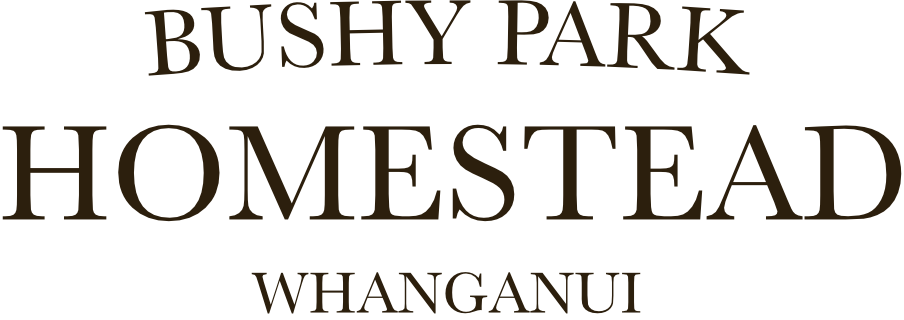History & Heritage
In 1880, an area of 391 hectares (966 acres) inland from Kai Iwi was sold by a Māori chief, Uru Te Angina to James Moore for £483. Moore established a large farm on the estate and his son Frank Moore became known as a breeder of cattle and horses. However, a 99 hectares (245 acres) remnant of native lowland forest was preserved, and this is now the Bushy Park Tarapuruhi reserve. The forest reserve and the homestead, built for Frank Moore in 1906, were bequeathed to the Royal Forest and Bird Protection Society of New Zealand by Moore upon his death in 1962.
Between 1981 and 1984, the national Forest & Bird organisation debated the economic viability of continued involvement in the Bushy Park homestead and grounds. However, in 1985, the Forest & Bird Council confirmed that they would continue to own the homestead and promote its use. In 1988, a bunkhouse was constructed behind the homestead, adjacent to the stables, to provide additional accommodation on site. In 1994, the homestead and grounds were transferred to the Bushy Park Homestead and Forest Trust, later renamed as the Bushy Park Trust. Responsibility for managing the homestead and grounds was transferred to the members of the trust in 1995.
A 4.8-kilometre (3.0 mi) pest-exclusion fence around the reserve was completed in May 2005, and two aerial drops of rodent bait occurred later that year. The sanctuary was declared predator-free in 2006 and is now a mainland island (or ecological island). A secondary predator fence was subsequently constructed to enclose approximately eight hectares (20 acres) of open space and wetlands surrounding the homestead, as a defence against rats and mice that could enter in vehicles visiting the homestead and adjacent buildings. The opening of Bushy Park’s kiwi crèche in 2005 was marked by the arrival of a female kiwi chick from the Waimarino Forest.
A celebration of the centenary of the Bushy Park reserve was held on 27–28 October 2006. In 2009, Bushy Park was judged as being one of the top 25 ecological restoration projects in Australasia. In 2014, there was an incursion of rats into the sanctuary. The Bushy Park trust mobilised volunteers to assist with predator control to eliminate the rats, but also announced their intention to seek funding for a paid full-time staff.
The forest reserve and homestead were renamed Bushy Park Tarapuruhi in 2019. The meaning of tarapuruhi in the Māori language is “place of abundant bird life”. In 2020, work began to extend the forest reserve by retiring a two-hectare (4.9-acre) paddock that had been leased out for grazing, and restoring it with plants sourced from within the reserve. In 2022, a further project commenced to revegetate an area of four hectares (9.9 acres) of paddock within the sanctuary boundary. The project was expected to take between three and five years, and required the expansion of the sanctuary’s plant nursery and shadehouses. In 2023, Bushy Park Tarapuruhi was chosen as one of three venues for a national celebration of the centenary of the founding of the Forest & Bird Protection Society.
View our entry on Blue Plaques NZ

By Frank J. Denton (1869–1963)

